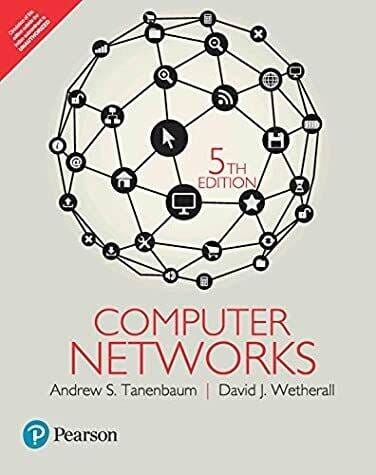No products in the cart.
Return To Shop
Menu
Categories
- Physics Books
- UPTU & AKTU Books
- Dictionaries / Language Learning
- Yoga
- Beauty and Fitness
- Text and Reference Books
- Biology Books
- Computer Science Books
- Personality Development
- Meditation
- Ayurveda / Homeopathy / Herbal Cure
- Used or Second Hand Books
- Accounting
- Children Books
- Family and Relationships
- Health & Fitness
- Crafts and Hobbies
- Mechanical Engineering Books
- Biotechnology Books
- Delhi University Books
- General
- Parenting
- Games & Quizzes
- Electrical Engineering Books
- Food Technology
- Management Books
- Biographies
- Nutrition
- Jokes - Humour
- Mathematics Books
- Hindi Books
- Best Deals: Top Selling Books
- Academic Book
- Law Books
- Class-11th Books
- Chemistry Books
- New Arrivals
- Electronics Telecom
- Class- 9th books
- Civil Engineering Books
- Medical Books
- School Books
- Environmental Engineering Books
- Electronics Communication Books
- Class- 10th class
- Free Online e-Books
- Class 12 th Books
- NCERT
- Motivational
- English Novel
- Astrology / Palmistry / Vastu / Hypnotism etc
- Competitive Examinations
- Engineering Books
- Electrical and Electronics Engineering (EEE)
- Encyclopedia
- Gift Items
- Cookery
- Economics
- Amity University ASET Books
- Alternative Therapy
- Spiritual Books
- Stress Management
Computer Networks By Andrew S. Tanenbaum And WetherallPustakkosh.com
₹789.00 Original price was: ₹789.00.₹410.00Current price is: ₹410.00.
Category: Used or Second Hand Books
Backorder means you can still order but the product's availability might have to be double checked with warehouses as there are other pending orders. We will ship it to you subsequently.
2 in stock
Buy book second hand or rent book: Computer Networks By Andrew S. Tanenbaum and Wetheral
Book Condition: Used Good
ISBN: 9332518742
“Computer Networks” by Andrew S. Tanenbaum is a seminal textbook that offers an in-depth exploration of the principles and practices underlying computer networking. Widely adopted in academic institutions, this book serves as a comprehensive guide for students and professionals seeking to understand the complexities of network systems.
The text is meticulously organized, beginning with foundational concepts and progressively delving into more intricate topics. Each chapter introduces key principles, followed by real-world examples that illustrate these concepts in action. This approach not only enhances comprehension but also demonstrates the practical applications of theoretical knowledge.
A distinctive feature of Tanenbaum’s work is its structured methodology. The book starts with the physical layer of networking, covering computer hardware and transmission systems, and systematically advances through the various layers of network architecture. This progression ensures a holistic understanding of how networks operate from the ground up.
The sixth edition of “Computer Networks” has been thoroughly updated to reflect the latest advancements in the field. Notably, the chapter on network security has been extensively revised to focus on contemporary security principles and practices, addressing the evolving challenges in cybersecurity. This update ensures that readers are equipped with current knowledge essential for navigating today’s networked environments.
Throughout the book, Tanenbaum emphasizes the importance of real-world applications. The text features continuous examples of networks such as the Internet, wireless networks, including Wireless LANs, broadband wireless, and Bluetooth. These examples provide readers with a tangible understanding of how theoretical concepts are implemented in practical scenarios.
The book’s comprehensive coverage includes topics such as:
- The Physical Layer: Examining guided and wireless transmission media, the public switched telephone network, cellular networks, cable networks, and communication satellites.
- The Data Link Layer: Discussing design issues, error detection and correction, elementary data link protocols, and data link protocols in practice.
- The Medium Access Control Sublayer: Addressing the channel allocation problem, multiple access protocols, Ethernet, wireless LANs, Bluetooth, DOCSIS, and data link layer switching.
- The Network Layer: Covering routing algorithms, congestion control, and internetworking.
- The Transport Layer: Focusing on process-to-process communication, UDP, TCP, and congestion control.
- The Application Layer: Exploring network applications, including the web, email, and DNS.
Each section is enriched with diagrams, examples, and exercises that reinforce learning and encourage critical thinking.
“Computer Networks” is renowned for its clarity and depth, making it an invaluable resource for both students and professionals. Its structured approach and real-world examples facilitate a comprehensive understanding of computer networking, preparing readers to tackle the challenges of modern networked systems.
Throughout the book, Tanenbaum emphasizes real-world applications, using examples such as the Internet, wireless networks, and Bluetooth to illustrate theoretical concepts.
Covering topics from the physical layer to the application layer, the book includes discussions on transmission media, data link protocols, routing algorithms, and network applications like the web and email.
Renowned for its clarity and depth, “Computer Networks” serves as an invaluable resource for students and professionals seeking a comprehensive understanding of computer networking.
ISBN: 9332518742
Computer Networks By Andrew S. Tanenbaum and Wetheral
Computer Networks By Andrew S. Tanenbaum ” by Andrew S. Tanenbaum is a seminal textbook that offers an in-depth exploration of the principles and practices underlying computer networking. Widely adopted in academic institutions, this book serves as a comprehensive guide for students and professionals seeking to understand the complexities of network systems.
The text is meticulously organized, beginning with foundational concepts and progressively delving into more intricate topics. Each chapter introduces key principles, followed by real-world examples that illustrate these concepts in action. This approach not only enhances comprehension but also demonstrates the practical applications of theoretical knowledge.
A distinctive feature of Tanenbaum’s work is its structured methodology. The book starts with the physical layer of networking, covering computer hardware and transmission systems, and systematically advances through the various layers of network architecture. This progression ensures a holistic understanding of how networks operate from the ground up.
The sixth edition of “Computer Networks” has been thoroughly updated to reflect the latest advancements in the field. Notably, the chapter on network security has been extensively revised to focus on contemporary security principles and practices, addressing the evolving challenges in cybersecurity. This update ensures that readers are equipped with current knowledge essential for navigating today’s networked environments.
Throughout the book, Tanenbaum emphasizes the importance of real-world applications. The text features continuous examples of networks such as the Internet, wireless networks, including Wireless LANs, broadband wireless, and Bluetooth. These examples provide readers with a tangible understanding of how theoretical concepts are implemented in practical scenarios.
The book’s comprehensive coverage includes topics such as:
- The Physical Layer: Examining guided and wireless transmission media, the public switched telephone network, cellular networks, cable networks, and communication satellites.
- The Data Link Layer: Discussing design issues, error detection and correction, elementary data link protocols, and data link protocols in practice.
- The Medium Access Control Sublayer: Addressing the channel allocation problem, multiple access protocols, Ethernet, wireless LANs, Bluetooth, DOCSIS, and data link layer switching.
- The Network Layer: Covering routing algorithms, congestion control, and internetworking.
- The Transport Layer: Focusing on process-to-process communication, UDP, TCP, and congestion control.
- The Application Layer: Exploring network applications, including the web, email, and DNS.
Each section is enriched with diagrams, examples, and exercises that reinforce learning and encourage critical thinking.
“Computer Networks” is renowned for its clarity and depth, making it an invaluable resource for both students and professionals. Its structured approach and real-world examples facilitate a comprehensive understanding of computer networking, preparing readers to tackle the challenges of modern networked systems.
| Weight | 0.5352 kg |
|---|
Related products
Bharat Ka Savindhan ( Constitution Of India ) by Jai jai Ram Upadhyay
T.S. Grewal’s Analysis Of Financial Statements: Textbook for CBSE Class 12
A TEXTBOOK OF METROLOGY by M. Mahajan Pustakkosh.com
“HUMAN RESOURCE MANAGEMENT”
Business Studies: A Textbook For Class XII (Ninth Edition) by Subhash Dey
Rural Marketing By Kashyap
DIGITAL SIGNAL PROCESSING, 3RD EDITION By S. Salivahanan
Cryptography and Network Secur...
₹659.00 Original price was: ₹659.00.₹425.00Current price is: ₹425.00.


Compilers 2e Alfred ...
₹899.00 Original price was: ₹899.00.₹540.00Current price is: ₹540.00.
More
More








